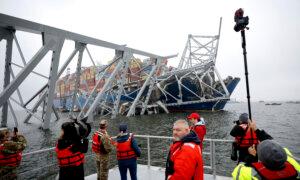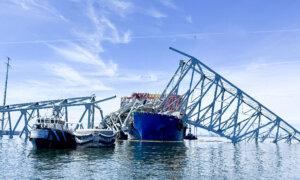Among the questions to be asked will be, ‘Why is DOT footing the Key bridge rebuild costs despite the federal-state/local share law?
When two congressional panels convene a joint hearing in the Port of Miami on April 5, it will mark the first official assembly of federal lawmakers since a container ship knocked down Baltimore’s Francis Scott Key Bridge on March 26, killing six and shutting down one of the U.S. East Coast’s busiest ports.
The events that led up to the ship crash, who pays for what and when, and the state of U.S. ports—and infrastructure, more generally—are topics certain to surface when the House Transportation & Infrastructure Committee’s Coast Guard & Maritime Transportation Subcommittee, and the House Homeland Security Committee’s Transportation & Maritime Security Subcommittee meet for a “Port Safety, Security, and Infrastructure Investment” presentation.
The president’s open-ended pledge would violate federal emergency-repair law for highways, a fact noted by Sen. Chris Van Hollen (D-Md.), outgoing Senate Minority Leader Mitch McConnell (R-Ky.), Treasury Secretary Janet Yellen, several members of House transportation and homeland committees, the House Freedom Caucus, and others in widely published comments and interviews.
Federal emergency highway funding is capped at 80 percent of accrued disaster costs with some federal cost-shares up to 90 percent. The Federal Highway Administration’s (FHA) emergency fund, capped at $100 million per year, has about $950 million right now, according to DOT.
Interstate highways are owned and operated by states. Key Bridge is part of the I-695 and, thereby, its stretch in Maryland is owned by Maryland, which has run budget surpluses each of its last three years and has $2.5 billion in its “rainy day” fund.
The bridge is owned and operated by the Maryland Transportation Authority (MTA), a Maryland Department of Transportation (MDOT) agency. MTA collects tolls to pay for the bridge’s maintenance and repair.
In fact, less than a quarter of the $232 billion spent nationwide by governments in the United States on roads in Fiscal Year 2022 was federal money, reports the Peter G. Peterson Foundation, with 78 percent raised by state and local taxing authorities.
During a press conference last week, Mr. Van Hollen, flanked by Maryland Gov. Wes Moore and Baltimore Mayor Brandon Scott, said that up to 90 percent of the bridge’s reconstruction will be paid through the FHA’s emergency fund, with 10 percent paid by state and local governments.
He and Sen. Ben Cardin (D-Md.) are preparing legislation for the federal government to cover the remaining 10 percent portion.
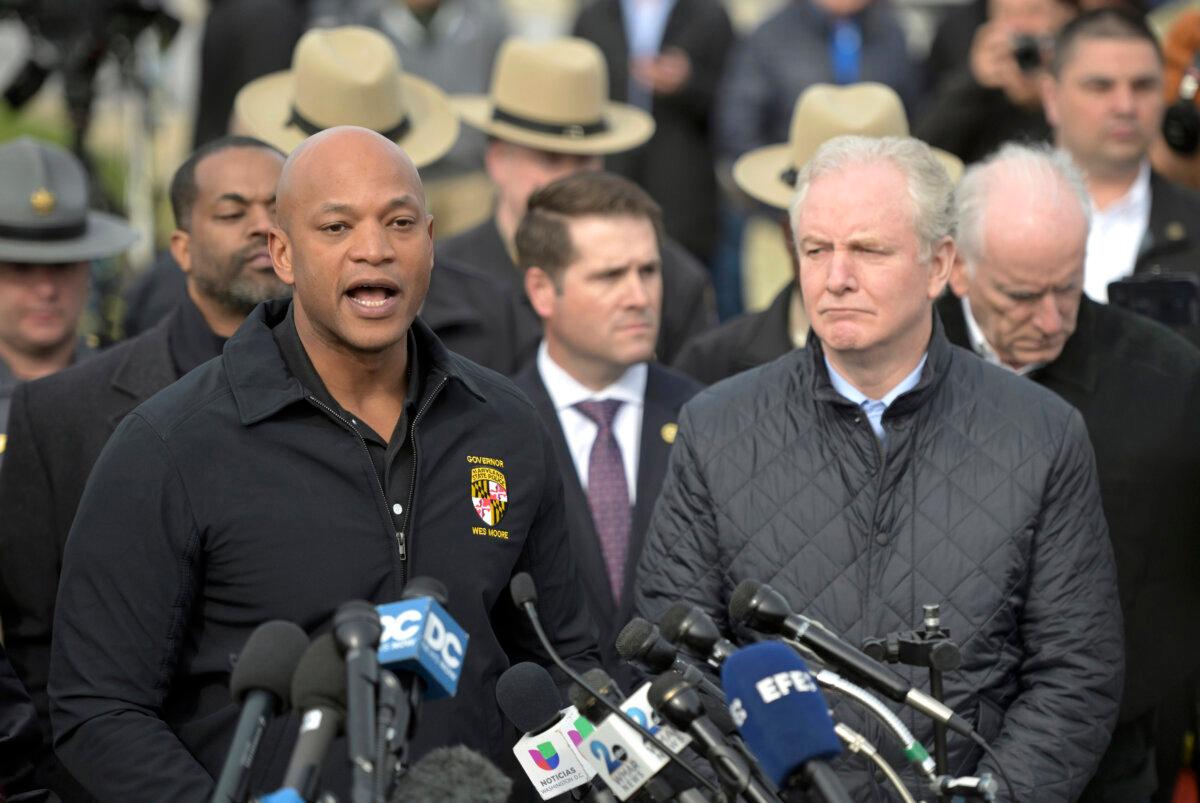
First Things First: Fix It
The Van Hollen/Cardin measure may not fly. Mr. McConnell, in an April 1 radio interview, said while the federal government will pay the “lion’s share” of up-front costs, it should not pay the whole thing.
Nevertheless, Taxpayers for Common Sense President Steve Ellis, Bipartisan Policy Center’s infrastructure project director Andy Winkler, and other fiscal watchdogs have issued statements in support of fixing the bridge first and sorting out who-pays-for-what later.
House Rules Committee Chair Tom Cole (R-Okla.), who also chairs the House Appropriations Committee’s Transportation Subcommittee, told Fox Digital he’s “not hostile” to fulfilling President Biden’s pledge, and that “certainly, Baltimore has every reason to expect a full and robust federal response.”
Rep. Tim Burchett (R-Tenn.) said he would keep “an open mind” about the federal government paying the whole bill if the Biden administration aggressively pursues insurance repayments and agreements with local governments to “apply those funds back towards” the U.S. Treasury.
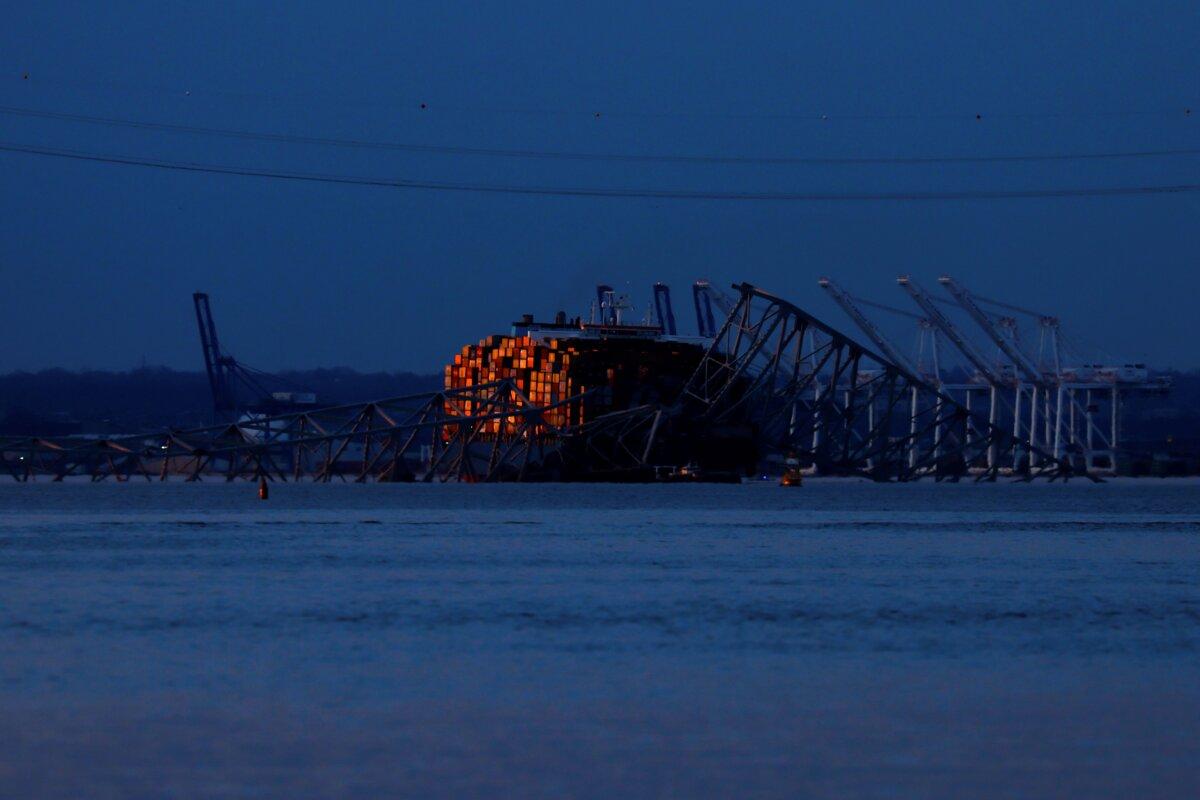
Pay-and-Chase
House Transportation & Infrastructure Committee member Rep. Jefferson Van Drew (R-N.J.) said March 27 on Fox News that the federal government may need to foot costs before coming back to state and local agencies for their share of the payment, and collecting insurance claims from the private operators responsible.
“Here’s the deal: this is what government is supposed to do. We need to do it and get it done quickly,” he said of a “pay-and-chase” strategy to recoup upfront expenses.
He cited how Congress unanimously approved $250 million to rebuild a Minnesota bridge two days after it collapsed. “The pitch is, your district could be next, and this has historically been bipartisan,” he said.
“First,” it said, “the federal government had not passed a $1.2 trillion infrastructure law three years prior to the Minneapolis bridge collapse that it could pull money from.”
Second, the Minnesota bridge collapsed; the Key bridge was knocked down by a ship. Third, it said, the Minneapolis decision was “wrongheaded” and has now “created a moral hazard where states expect federal funding to make up for their maintenance irresponsibility if a catastrophe happens.”
Examples of the federal government applying a pay-and-chase disaster funding formula include the 2023 East Palestine, Ohio, train derailment, the May 2013 Interstate-5 Skagit River Bridge collapse in Washington state, the 2010 Deepwater Horizon oil spill in the Gulf of Mexico, and the 1989 Exxon Valdez oil spill in Alaska.
Mr. Garamendi, a House Transportation & Infrastructure Committee member, said that Congress should fast-track rebuilding the bridge.
“Environmental issues should be secondary or maybe not even considered … and maybe we don’t even need a new design,” he said. “There are bridges that are similar purpose to this one. We can take a design out of an older bridge that may have been built in the last decade with modern standards. So let’s get on with it.”
Fiscal hawks and House Freedom Caucus members are among those most adamantly opposed to President Biden’s pledge, with many citing that it is illegal under federal law and a potentially costly precedent in making the federal government the default bank for upfront costs in disasters.
Mr. Van Drew said there is urgency in restoring the bridge because “inventories companies are not the same inventories they used to have years ago before Joe Biden and his inflation got so high [making it] problematic for them to hold that many goods in one location. So, we’re going to very quickly have problems with the supply chain. You know, bad policies lead to more bad policy.”
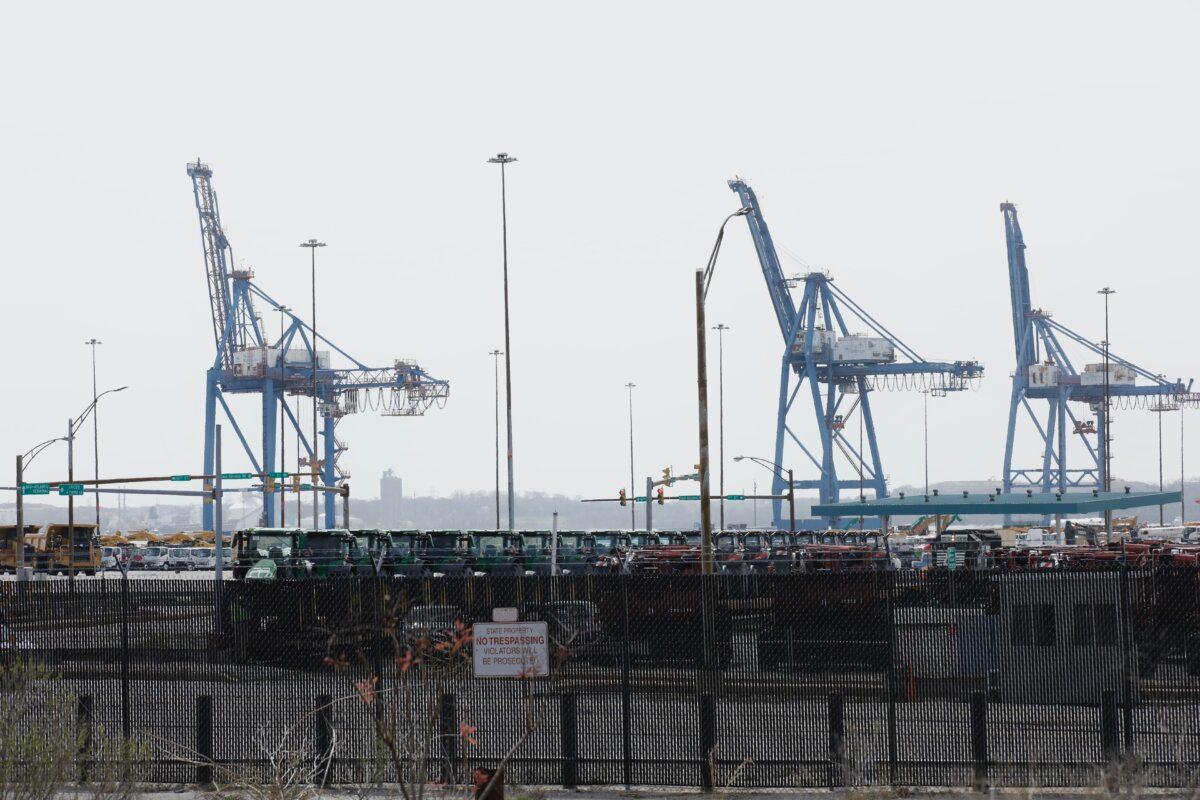
Boost Port Infrastructure Spending
The April 5 hearing in the Port of Miami will also be the first official forum where lawmakers are also likely to raise broader issues with the nation’s ports, bridges, rail/road supply chain links, and overall concerns about the flagging American commercial shipping industry, and its merchant marine, military sea-loft capacity, and maritime policies.
More money for ports is needed, the AAPA, National Association of Waterfront Employers (NAWE), National Maritime Safety Association (NMSA), and many other commerce groups and associations maintain.
“This bill represents a significant down payment on modernizing and upgrading port and intermodal infrastructure,” AAPA states, while noting that the BIL and IRA money have limited time frames for what will require a longer sustained investment.
Representatives of those organizations are among witnesses in three panels who will testify before the joint subcommittees in Miami.
Rep. Mario Diaz-Balart (R-Fla,), a former co-chair and member of the Congressional PORTS Caucus, will lead the first panel. Coast Guard RAdm John C. Vann and Wayne Arguin will join U.S. Maritime Administration (MARAD) Associate Administrator for Ports and Waterways William Paape in the second panel discussions.
Third panel witnesses include Crowley Shipping Senior Vice President and General Manager James Fowler; Port of Miami Deputy Port Director Frederick Wong Jr. on behalf of AAPA; Georgia Ports Authority Chief Operating Officer Ed McCarthy, on behalf of NAWE; Cooper/Ports America President and CEO Dave Morgan on behalf of NMSA; and Brent Sadler, a Heritage Senior Research Fellow who has been critical of port funding shortfalls that are coming to roost in Baltimore Harbor.
“What other port safety measures were needed/known but not acted on” in Baltimore and in ports across the country because of cuts in Coast Guard port inspections, he asked in a series of X posts.
“We don’t,” he lamented.
These and other glaring needs should have greater priority in BIL and IRA infrastructure allocations, said House Transportation & Infrastructure Committee member Rep. Jeff Duncan (R-S.C.).
“While I mourn the lives lost in Baltimore, we cannot haphazardly spend over $1 billion as America is $34 trillion in debt. Before we spend one more dime for domestic infrastructure, we must build a domestic border wall,” he said in a statement. “Any funds used to rebuild the Francis Scott Key Bridge should be reprogrammed from Biden’s wasteful infrastructure bill.”
Original News Source Link – Epoch Times
Running For Office? Conservative Campaign Consulting – Election Day Strategies!

